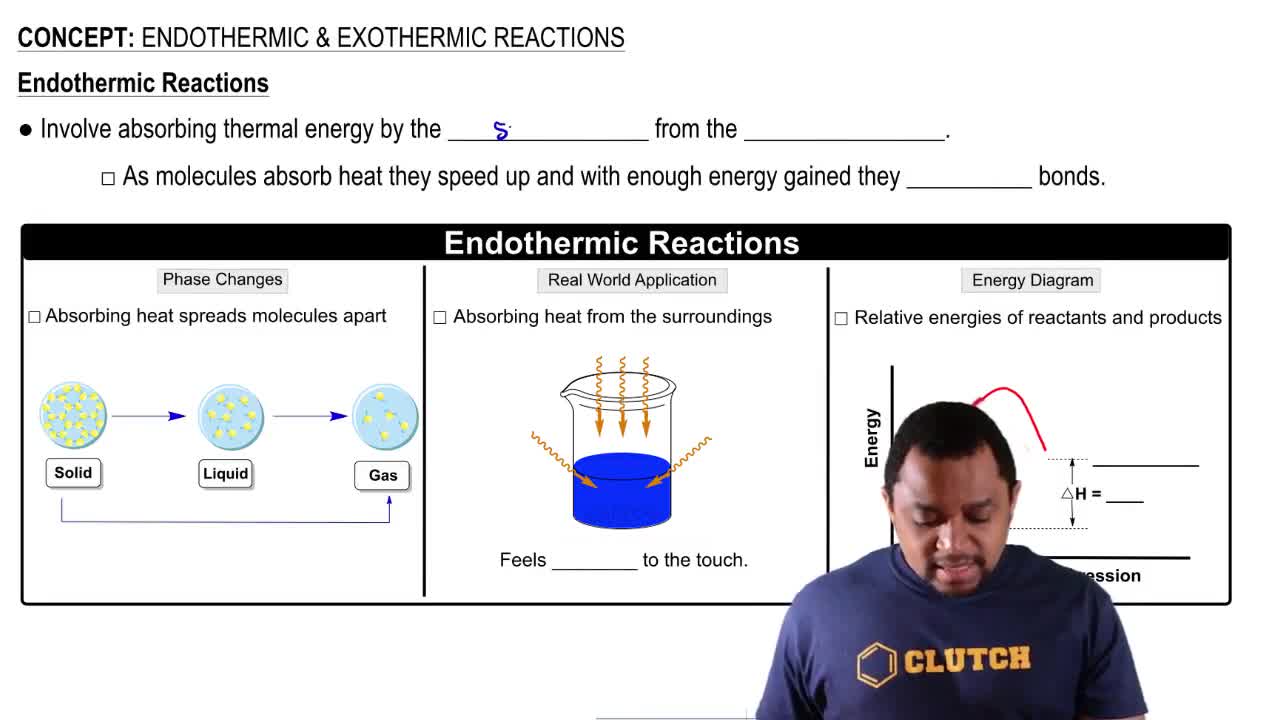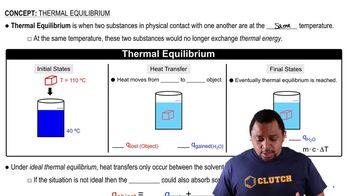Here are the essential concepts you must grasp in order to answer the question correctly.
Le Chatelier's Principle
Le Chatelier's Principle states that if a dynamic equilibrium is disturbed by changing the conditions, the position of equilibrium shifts to counteract the change. This principle helps predict how a system at equilibrium will respond to changes in concentration, temperature, or pressure, thereby affecting the amounts of reactants and products present.
Recommended video:
Endothermic Reactions
An endothermic reaction is one that absorbs heat from its surroundings. In the context of the given reaction, increasing the temperature will favor the formation of products, as the system will shift to absorb the added heat, thus potentially increasing the quantity of CaCO₃ produced at equilibrium.
Recommended video:
Endothermic & Exothermic Reactions
Catalysts and Equilibrium
A catalyst, such as iridium in this reaction, speeds up the rate of both the forward and reverse reactions without being consumed. While it helps the system reach equilibrium faster, it does not affect the position of equilibrium or the total quantities of reactants and products at equilibrium.
Recommended video:




